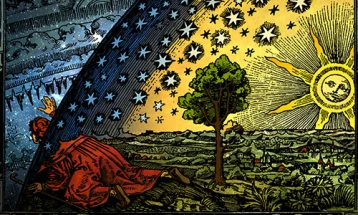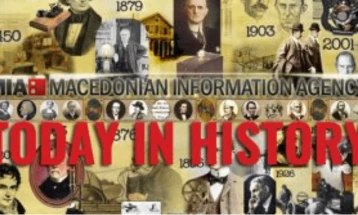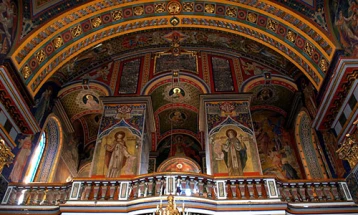Religious calendars
- 21 February 2025 (MIA)

21 February 2025 (MIA)
Macedonian Orthodox Church Calendar
The Holy and Great Martyr Theodore Stratelates
There are martyrdoms that are more than costly. The costliness of a martyrdom depends on the greatness of the good things of this world that a Christian gives up, receiving suffering in its place; and it depends also on the greatness of the suffering which he endures for the sake of Christ. St. Theodore, a Roman commander in the army of the Emperor Licinius and governor of the city of Heraclea, scorned his youth, his good looks, his military status and the good-will of the Emperor, and in place of all this received terrible tortures for the sake of Christ. Firstly Theodore was flogged, receiving 600 lashes on the back and 500 on the stomach; then he was crucified and pierced through with arrows. Finally he was slain with the sword. Why all this? Because St. Theodore loved Christ more than anything else in the world. He scorned the foolish idol-worship of the superstitious Emperor, shattered the silver and gold idols, giving the pieces to the poor, brought many to the Christian faith and urged the Emperor himself to reject idolatry and believe in the one God. During the whole of his torture, Theodore repeated unceasingly: `Glory to Thee, my God, glory to thee!’ He suffered on February 8th, 319, at three o’clock in the afternoon, and entered into the Kingdom of Christ. He is regarded as the protector of soldiers, who turn to him for help. His wonderworking relics were taken from Euchaita to Constantinople and buried in the Church at Blachernae.
Catholic Calendar
St. Peter Damian
Born in Ravenna on the Adriatic coast of Italy in 1007, he lost both parents when he was young and was put in the care of a brother, who ensured him an excellent education. In 1035 he became a monk in the branch of the Benedictine Order known as the Camaldolese (founded by St. Romuald); these lived in cells as hermits, somewhat like Carthusians, and spent time in manual labour and study. He rose to be abbot of the community (1043) and to be responsible for other foundations. He proved an excellent spiritual father and was much called upon for advice. He was much concerned with sloppiness in the faith, from chess-playing bishops downwards, and was in tune with the reforms of the then Pope, Leo IX, who was trying to tackle financial corruption in the Church and the ever-thorny question of clerical celibacy. In 1057 he was made a cardinal and bishop of Ostia (the port of Rome) and served as a diplomat on behalf of the even more vigorous reforming Pope, Gregory VII [Hildebrand]. Aware that all this was taking him further from his monastic roots, he begged to be allowed to return to his chosen way of life; this was granted and he spent his old age in his monastery happily making wooden spoons (presumably without symbolic significance). Even in these last years he was called in as a peacemaker, this time in his native city of Ravenna. He died at Faenza in 1072.







